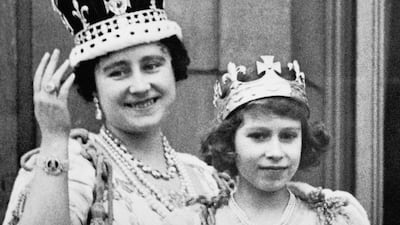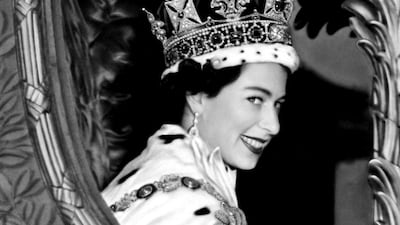Indians are calling for the return of Koh-i-Noor, the world’s most expensive diamond, after the death of Queen Elizabeth II last week.
The 105.6-carat oval-shaped Koh-i-Noor, which means “mountain of light” in Persian and is worth $591 million, is believed to have been found in the Kollur mines in the modern-day Indian state of Andhra Pradesh between the 12th and 14th centuries, during the Kakatiya dynasty rule.
It travelled through several Indian dynasties including the Turco-Afghan Khilji, the Mughals, the Persians, the Afghans and the Sikh rulers before ending up with the British colonial empire and is kept at the Tower of London.

For centuries the stone was owned by kings in the Indian subcontinent before British colonisers took it and made it a prized possession of the monarchy.
For decades, Indians, Pakistanis, Afghans and Iranians have laid claim to the precious stone, which is believed to bring bad luck to its male owners.
Britain has consistently declined the claims and asserted they were legal owners of the gemstone, a view held by India’s Supreme Court which ruled that the diamond was not looted or stolen but procured by the colonisers through a legal treaty.
But social media users in India have been demanding the return of the famed gemstone since the queen’s died on September 8, promoting petitions for the cause.
Venkatesh Shukla started a petition aiming to get 1 million signatures on LinkedIn, reminding the “honourable country” UK to return the “loot”. So far, it has just 6,500 signatures.
“Every time the crown appears with Koh-i-Noor as the jewel of the crown, it reminds the world of Britain's colonial past and the shameful way they got a five-year-old prince to “gift” it to Britain,” Mr Shukla wrote.
“The British monarchy isn’t obviously going to give it back. If we as an emerging strong country have any sort of civilizational memory and self-respect, we should officially ask them to return [it],” said Twitter user Krithika Sivaswamy.
In Puri, Odisha in India’s east, servitors of the Jagannath Temple have also launched a campaign demanding the stone, citing a letter by Sikh emperor Ranjit Singh.
He had pledged to offer it to the deity, before the British took it from his king, who was 10 years old at the time.
How the Koh-i-Noor ended up in Britain

Historically, India was the world’s only source of diamonds, with most sifted out of river sands, or alluvium.
The Koh-i-Noor is believed to have originally been a 158-carat uncut diamond when it was found in the region and embedded in the statue of the Hindu goddess Bhadrakali in a temple in Warangal.
It was later taken by Alauddin Khilji, a Turco-Afghan monarch who initially ruled the Delhi Sultanate as he expanded his kingdom into parts of the South Indian peninsula in the 14th century.
It was further passed on to the Babur, who founded the Mughal empire in the subcontinent and took over the Delhi Sultanate in the 15th century.
The precious stone remained with generations of Mughal rulers for almost two centuries, including emperor Shah Jahan, who embedded the gem in his Peacock Throne.
In the 17th century, Persian ruler Nadir Shah invaded Delhi and looted all the jewels from the Mughal treasury, including the famed Peacock Throne, and returned to Persia.
But Nadir Shah was assassinated and the diamond fell into the hands of one his generals, Ahmad Shah Abdali, who became the emir of Afghanistan.
It was his descendant, Shah Shuja Durrani, who brought the stone back to India in 1813 and gave it to Ranjit Singh, the Sikh ruler, who ruled parts of northern India, with his capital Lahore, located in present-day Pakistan.
While Mr Singh forcefully guarded his jewels during his 50-year reign, the Koh-i-Noor fell into the hands of the British East India Company in 1849, as the empire was lost to British colonisers under the rule of his king, Duleep Singh, who was 10 years old.
The young king signed a treaty with the British in 1849, giving up his sovereignty along with the entire royal treasury, including the gemstone, to Queen Victoria, who wore it as a brooch.
The diamond was later passed to Queen Alexandra and Queen Mary and later to the Queen Mother during the coronation of her husband, George VI, in 1937.
William Dalrymple, a renowned British historian based in Delhi, states in his soon-to-be-released book that the diamond was a part of a peace treaty with the British.
“Maharaja Ranjit Singh kept it with him his whole life. During the regency of his son Duleep Singh, the diamond was taken away,” Mr Dalrymple recently told the Indian Express.
“It was part of the peace treaty of the British and was handed over in the process of the defeat of the Sikhs as one of the spoils going to the victor.”
Demanding the diamond's return

India first demanded the return of the stone in 1947, the year it gained independence from the British after a two centuries-long freedom movement. It made a further request in 1953.
Another request was reportedly made in 1997 when the queen visited India to mark the 50th anniversary of independence from Britain.
Several Indian parliamentarians again launched a bid for the return of the diamond in 2000 and India’s archaeological authority also made efforts in 2010, but Britain denied all the requests, saying the stone had been part of its heritage for more than 150 years.
Former British prime minister David Cameron, during his visit to India in 2013, said returning the stone was not “sensible”.
“I certainly don't believe in 'returnism', as it were,” he said.
In 2016, the Indian government told the country’s top court the diamond had been “gifted” to the East India Company by the rulers of Punjab in 1849.
The government also reiterated its resolve to try to bring back the Koh-i-Noor diamond amicably.
The Pakistan government has also staked a claim to the diamond for several decades. Most recently in 2019, it said colonisers stole the gem from its territory, meaning it was the rightful owner.









